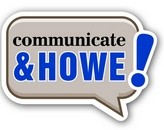Getting content ready for a new website is a major task at any time. When content needs to be prepared by people who are not writers, communications professionals or online media experts, preparing content that meets the needs of your audience becomes that much more difficult. It is a situation that is not uncommon though for charities, arts and culture organizations and small businesses.
Faced with such a situation recently, I prepared a list of 20 tips to help ensure the content on the new website was easy to read and inspired action. Here is a generic version that can help you meet the same challenge.
Design Tips
1. Keep pages clean and easy to read.
2. White space is good—even better than big, pretty pictures.
3. Include images/diagrams that are informative, relevant to the message being told or attract the reader’s attention.
Content Tips
4. Take a fresh look at your content. Avoid cutting and pasting from your current website unless you have a plan to consider updating that text later.
5. Have one person per section of the website who will compile the information supplied by various team members; this will help with consistency of voice, though that will still be a challenge across the website without a common editor.
6. Determine who your audience(s) is/are and the main message for that group.
7. Have descriptive/compelling headlines.
8. Make text easy to scan by using headers, subheads, and bulleted or numbered lists.
9. Copy of about 600-800 words is suggested per page.
10. Get straight to the point and avoid a lot of introductory comments. Put the most important information up front.
11. Keep paragraphs short
12. Urge action. Think about what you want the reader to do with the information on the page
13. Use common language that is easily understood
• Avoid “internal” terminology that is difficult for people outside your organization to understand or jargon that is specific to people immersed in your field
14. Use links to related information
• Helps avoid having same info in more than one place to update
15. Try to avoid making anyone scroll down
16. If you know your text is going to require scrolling to read it all, ask yourself:
• Is the copy that requires scrolling important enough to have its own page?
• Am I ok with the fact that someone may not scroll down to read it the first time they are on that page?
17. Sometimes a long page is the best way to go such as if you have a list of programs
• If you use a long page, include a menu of choices at the top that link people to an “anchor” beside that section below
• Include a “back to top” link after each item.
18. Keep in mind that people like lists.
19. Work key words that people use to search for information into your copy but in a natural way.
20. When you finish writing and proofreading, perform one last check for bad spelling and consider one for poor grammar (usefulness depends upon your grammar knowledge and knowing when it is acceptable in everyday usage to break the rules).
Bonus Tip: Don’t hide information in a PDF. In most cases, the information should be on the website itself so that people can find it easily and without downloading the PDF and hoping to find it there.






